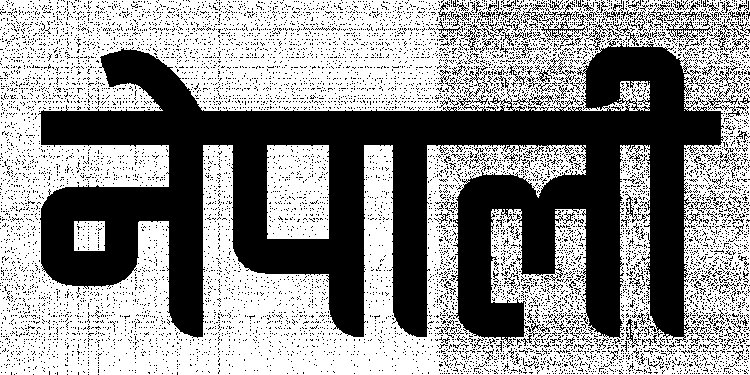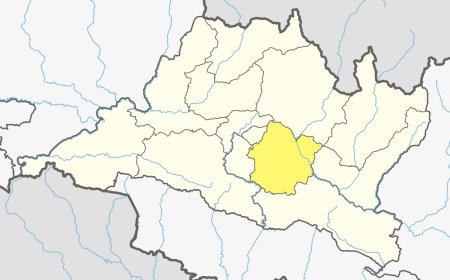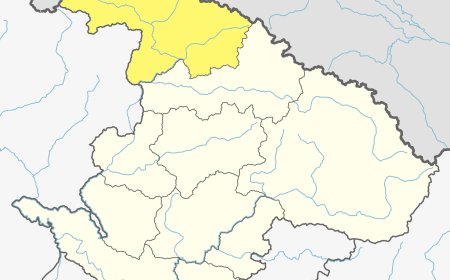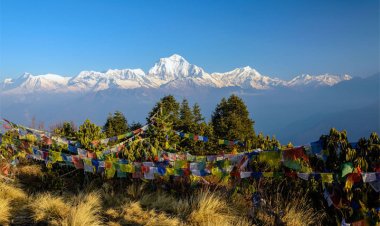The Decline of the Nepali Language: Protecting a Cultural Legacy
Discover the decline of the Nepali language, its cultural significance, and the urgent need to preserve this rich heritage for future generations.

Languages are not only instruments of communication; they encapsulate the pith of a culture, its history, and the collective character of individuals. Within the multicultural embroidered artwork of Nepal, the Nepali language stands as a binding constraint, official together differing communities, and serves as an image of national pride. Be that as it may, in later times, there has been a developing concern that the Nepali language is continuously blurring away from our exceptionally good eyes. This article digs into the disturbing patterns and variables contributing to the decline of the Nepali language, emphasizing the critical need to address this issue and protect this important etymological legacy.
Throughout history, the Nepali language has played a pivotal role in shaping Nepal's social, cultural, and political landscape. The utilization of communication channels has facilitated the exchange of ideas, narratives, and traditional practices between parties situated in disparate geographic locations, effectively fostering and strengthening interpersonal connections. The Nepali language has played a crucial role in diverse fields such as writing, trade skills, education, and governance, serving as a unifying force that contributes to a strong sense of identity and belonging among the people of Nepal.
Historical Significance:
The verifiable noteworthiness of the Nepali language in Nepal is significant and profoundly entwined with the country's social and political advancement. Here are key focuses highlighting its authentic noteworthiness:
-
Antiquated Beginnings:
The Nepali language, also known as Nepali or Gorkhali, has its roots within the old Indo-Aryan languages. It advanced from the Prakrit language and Sanskrit, the classical languages of Hindu sacred writings and antiquated Indian writing. -
Birth of Advanced Nepal:
The development of the Nepali language picked up an unmistakable quality amid the unification of advanced Nepal by King Prithvi Narayan Shah in the 18th century. As Nepal's borders extended, the Nepali language became the lingua franca and a device for cultivating national solidarity among different ethnic and phonetic groups. -
National Language:
With the foundation of the Shah line, the Nepali language was assigned as the official language of the Kingdom of Nepal. It played a vital role in solidifying a sense of character, administration, and communication among the assorted communities inside the nation. -
Part in Writing and Craftsmanship:
The Nepali language has been the medium for productive scholarly and imaginative expression all through history. Famous writers, journalists, and writers have contributed to Nepali writing, making a wealthy embroidered artwork of verse, books, society stories, and devout writings.
Here are a couple of conceivable dangers to the Nepali language:
-
Globalization and English Dominance:
With expanding globalization, the dominance of the English language has developed around the world. In Nepal, English is becoming more predominant in instruction, commerce, and the media. The developing impact of English could lead to a decrease in the utilization and noticeable quality of the Nepali language, especially among younger generations. -
Language Move:
Language switching happens when speakers of a specific language switch to another language regularly due to financial variables or perceived glory. In Nepal, there are different ethnic and etymological groups, each with their language. The Nepali language, being the official language and lingua franca, might apply weight to lesser languages, driving a progressive decrease in their utilization and essentialness. -
Relocation and Urbanization:
Rural-to-urban relocation and urbanization can affect language utilization and inclinations. As individuals move to cities in search of better openings, they may receive the prevailing language of the urban areas, which in Nepal's setting is frequently Nepali. This could result in the marginalization or misfortune of minority languages spoken in country zones. -
Need for language Approach Usage:
Nepal has recognized Nepali as its official language, but the compelling usage of language arrangements can sometimes be a challenge. In case the government comes up short on effectively advancing and ensuring the Nepali language, it may confront troubles in keeping up its status and guaranteeing its continued utilization and improvement.
Cultural Impact and Identity Loss:
The Nepali language's social effect and character may confront challenges leading to misfortune due to components such as globalization, urbanization, instructive approaches, media impact, and generational shifts. English dominance and Western impact, movement to urban regions, the need for language bolstering in instruction, the eclipsing of Nepali substance in media, and declining intergenerational language transmission can all contribute to this misfortune. To address this, advancing Nepali language instruction, empowering its use in media, supporting community activities, and cultivating pride and mindfulness are pivotal in protecting the social character related to the Nepali language.
Importance of Language Diversity:
Language differences are of extreme significance in Nepal due to its wealthy social legacy and multi-ethnic society. With over 100 languages spoken within the nation, protecting and advancing phonetic differences is pivotal for social cohesion and comprehensive advancement. Language acts as a medium for communicating personality, social values, and a verifiable legacy. It empowers compelling communication, cooperation, and access to instruction, healthcare, and financial openings for all communities. Grasping etymologically differing qualities cultivates common regard, understanding, and resilience among diverse ethnic bunches, reinforcing national solidarity. Moreover, it jams inborn information frameworks and conventional hones, contributing to the general improvement of Nepal's social embroidered artwork and making a dynamic multicultural society.
Individual and Collective Responsibility:
The biting-the-dust state of the Nepali language requires both individual and collective obligations from society. Independently, Nepali speakers need to recognize the esteem and centrality of their mother tongue. They must effectively utilize and advance Nepali within their families, communities, and working environments. Empowering Nepali language instruction, writing, and media is imperative to revitalizing its utilization and guaranteeing its survival.
Collectively, the government, educational institutions, and media outlets must protect and advance the Nepali language. Actualizing language arrangements that prioritize the incorporation of Nepali in formal instruction and open administrations is basic. Contributing to the improvement of Nepali language assets, such as word references, linguistic use books, and online stages, can encourage their learning and utilization.
Moreover, media organizations ought to contribute by broadcasting and distributing substance in Nepali, cultivating a sense of pride and proprietorship among Nepali speakers.
As we need to think about the future of the Nepali language, it's important to acknowledge the urgent need for action. We need to try different things to change things for the better. To make sure that the Nepali language stays strong and alive, some plans can help. These plans include teaching both Nepali and another language, and recording and preserving the Nepali language. We need to work together and care about the importance of this language's history to prevent it from disappearing.
What's Your Reaction?





































































































